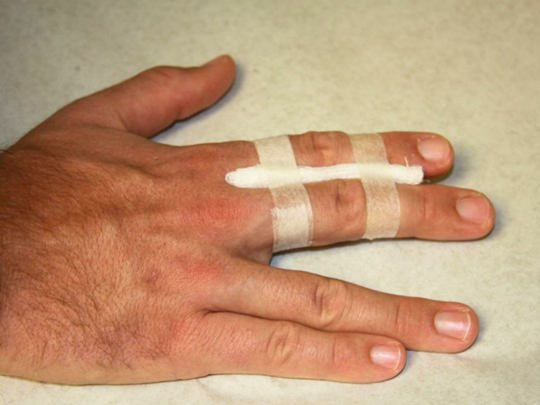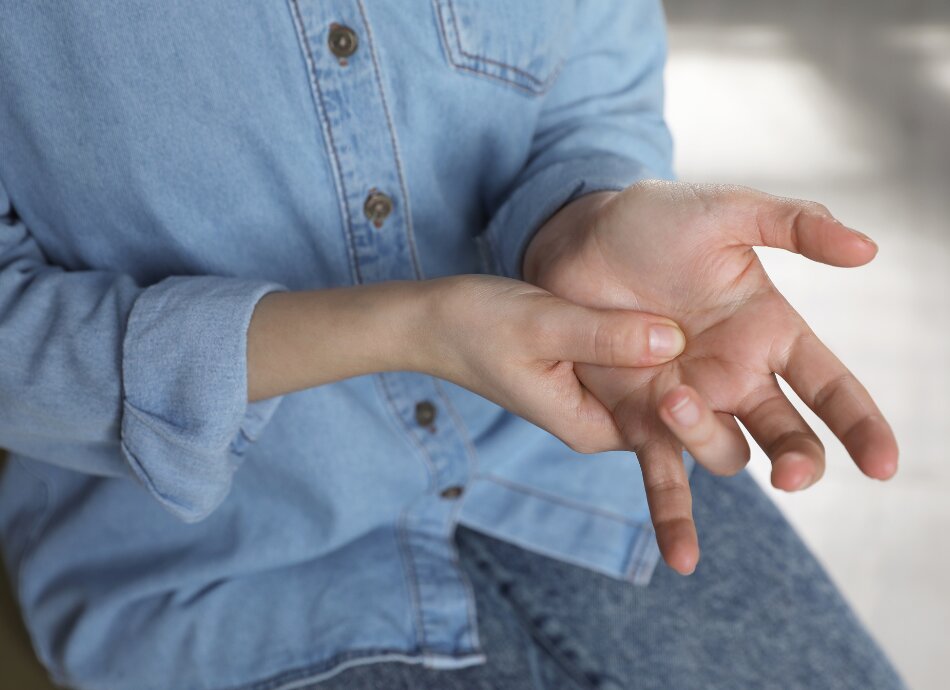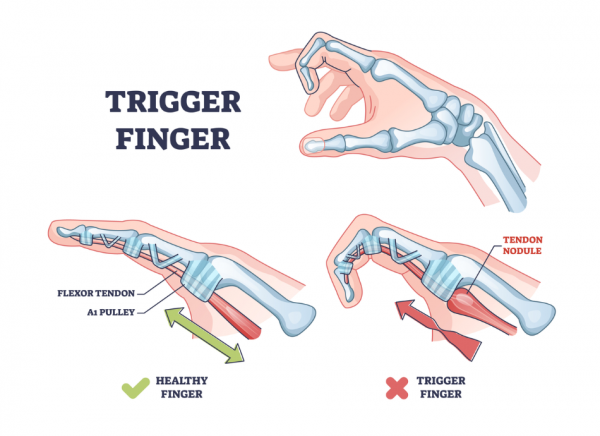There are some things you can try to see if they help with your trigger finger.
Loosen your grip
Modifying the handle of any tools or equipment you use can help to reduce the effort involved in gripping and so take tension off the tendon and its sheath. For example, you could put a soft-grip cover over your steering wheel or use pens with a cushioned grip. Think about the equipment you use day-to-day and where there might be an opportunity to make it easier to use.
Massage
- Massage the base of your affected finger or thumb: Apply gentle pressure and use a circular motion while massaging around and over the nodule at the base of your finger or thumb.
- Massage the surrounding area: Massage your fingers, hand, wrist and forearm.
- After massaging is a good time to stretch: Stretching in the prayer position is helpful, or extend your forearm, palm up, and using your other hand gently stretch your fingers and wrist back. Breathe in and out, relax your hand, repeat twice.
Splints
Buddy splint
The easiest option is a buddy splint. To do this, use adhesive medical tape to wrap your finger to the one next to it, above and below the middle knuckles of the 2 fingers. It's a good idea to put something soft between them.

Image credit: Wikimedia Sports Medicine(external link)
If you buddy splint, remove it before showering, and overnight. When you remove the buddy splinting, use your other hand to move your fingers through their full range 5 times to avoid stiffness.
Alternative splint
Another splinting option is a short cylinder splint.
- You can make a home made cylinder splint from a piece of an egg carton from the flat top.
- The cylinder should go around the middle knuckle but leave the end knuckle free.
- Cut a piece of the egg carton so that it wraps around your finger, leaving about 1 cm open at the front (on the palm side).
- Use adhesive medical tape to wrap around the top of the cylinder, the middle (at the level of your knuckle) and at the base.
The cylinder splint is helpful to wear overnight. Just take it off before showering.
If it's your thumb that is triggering, you just need to stop the end of your thumb bending too much. You can either make a cylinder splint, or just make a dorsal splint.
- Cut a piece of the egg part of the carton so that it shapes closely to the back of your thumb when it is just a bit bent.
- It should cover your thumb nail and the part of your thumb just below the end knuckle.
- Wrap adhesive medical tap around the end and around the base.
- Wear it in the same way as the cylinder splint
If your finger or thumb is still clicking even when splinted, don’t wait more than 1 week to see your healthcare provider, or visit a hand therapist. Hand therapists will have a range of other splint options that may help you.
Apps reviewed by Healthify
You may find it useful to look at some joint and bone health apps.








